Politics
US Navy drone fleet effort aimed at China runs aground in failed trials


NEW YORK: During a US naval test off the California coast last month, which was designed to showcase the Pentagon’s top autonomous drone boats, one vessel stalled unexpectedly.
As officials scrambled to fix a software glitch, another drone vessel smashed into the idling boat’s starboard side, vaulted over the deck, and crashed back into the water – an incident captured in videos obtained by Reuters.
The previously unreported episode, which involved two vessels built by US defence tech rivals Saronic and BlackSea Technologies, is one of a series of recent setbacks in the Pentagon’s push to build a fleet of autonomous vessels, according to a dozen people familiar with the programme.
Weeks earlier, during a separate Navy test, the captain of a support boat was thrown into the water after another autonomous BlackSea vessel it was towing suddenly accelerated, capsizing the support boat, according to four people familiar with the matter. The captain was rescued and declined medical attention. The incident was first reported by Defence Scoop.
Both incidents stemmed from a combination of software failures and human error, including breakdowns in communication between onboard systems and external autonomous software, according to a person with direct knowledge of the matter, who requested anonymity to share sensitive information.
The Navy, Saronic and BlackSea declined to comment on the incidents.
The videos showing the drone crash were verified by two Reuters sources, the landscape matching terrain imagery, the GARC-096 name ID and structure of the boat matching file imagery of Global Autonomous Reconnaissance Craft (GARC).
US military leaders, seeing the outsized impact of maritime drones in the Ukraine war, have repeatedly said they need autonomous swarms of aerial and maritime drones to hinder a potential advance by China across the Taiwan Strait. Taiwan itself has begun acquiring its maritime drones.
The drones being developed in Ukraine, which often look like speedboats without seats, and are capable of carrying weapons, explosives and surveillance equipment, are primarily remote-controlled and cost close to $250,000 – making them optimal for kamikaze missions that have effectively neutralised Russia’s Black Sea Fleet.
The US, meanwhile, is aiming to build an autonomous naval fleet that can move in swarms and without human command – a more ambitious task at a higher price point; as much as a few million dollars per speedboat.
The recent test failures highlight the challenges facing the Navy’s effort to deploy the nascent technologies, said Bryan Clark, an autonomous warfare expert at the Hudson Institute. It will need to adapt its “tactics as it better understands what the systems can do and what they can’t do.”
But the Navy’s problems go beyond getting the boats to work: its autonomous maritime drone acquisition unit has also been rocked by the firing of its top admiral, and a top Pentagon official voiced concerns about the programme in a candid meeting with Navy brass last month, Reuters found.
Since the most recent incident, the Pentagon’s Defence Innovation Unit (DIU), which had acquired technology for the tests, has indefinitely paused a contract valued close to $20 million with L3Harris, one of the companies providing autonomous software used to control some of the vessels, according to two people familiar with the matter.
The Pentagon did not respond to questions about the cause of the accidents or the L3Harris contract being paused, which has not been previously reported.
A Pentagon spokesperson said it conducted drone tests as part of a “competitive and iterative approach, between operators and industry.”
L3Harris declined to comment on the contract and directed questions to the DIU. The DIU declined to comment.
“L3Harris stands behind the safety, integrity and capability of our autonomy command-and-control product,” said Toby Magsig, who oversees L3Harris’ autonomous software products.
Rise of sea drones
To accelerate its drone effort, the Pentagon in 2023 launched the $1 billion Replicator programme, through which branches like the US Navy and the DIU planned to acquire thousands of aerial and maritime drones, along with the software to control them. The first systems from this programme are due to be announced this month.
The Navy has committed at least $160 million to BlackSea, which is producing dozens of its Global Autonomous Reconnaissance Craft boats a month, according to procurement records.
Saronic, which was recently valued at $4 billion in a funding round backed by Andreessen Horowitz and 8VC, makes the competitive sea drone Corsair, but has yet to announce a major contract. Federal procurement records show the company has generated at least $20 million from prototype agreements.
“These systems will play a critical role in the future of naval warfare by extending fleet reach, improving situational awareness, and increasing combat effectiveness,” acting chief of naval operations Jim Kilby said during a visit to BlackSea’s facility in June.
Navy turmoil
Since returning to the office, President Donald Trump has made fielding swarms of drones a top military priority. Trump’s “Big Beautiful Bill” passed last month included almost $5 billion for maritime autonomous systems.
But, so far, the Navy’s approach has faced scepticism under the new administration.
In April, the Navy’s key drone boat procurement unit – known as Programme Executive Office Unmanned and Small Combatants (PEO USC) – touted a successful demonstration of the software used to control BlackSea’s vessels in a post on LinkedIn, hailing it as “a major step forward in advancing #maritime autonomy.”
In response, Colin Carroll, then-chief of staff to Deputy Secretary of Defence Steven Feinberg, suggested the programme was duplicating other efforts within the Pentagon. “I have a feeling that there are changes in this programme’s future,” he replied to the LinkedIn post. Carroll, who is no longer with the Pentagon, declined to comment further.
The PEO USC was recently placed under review, according to four people familiar with the matter, due to a series of setbacks, and could be restructured or shut down.
This comes two months after the Navy said it had sacked the unit’s leader, Rear Admiral Kevin Smith, due to a loss of confidence in his leadership after the Naval Inspector General substantiated a complaint against him. Reuters was unable to contact Smith.
During a meeting last month, Feinberg grilled Navy officials about their autonomous vessel capabilities, including those being fielded by the PEO USC, according to three people briefed on the meeting. Feinberg was unimpressed by some of the capabilities being acquired by the Navy and questioned whether they were cost-effective, the people said.
A Pentagon spokesperson said, “We’re not going to comment on private internal meetings” and directed questions about PEO USC to the Navy.
The Navy declined to comment on the meeting or the acquisition unit being put under review. Spokesperson Timothy Hawkins said the PEO USC stands by its mission, including its role as acquisition authority for the maintenance and modernisation of unmanned maritime systems.
The turmoil comes as shipbuilders and software providers are angling to secure even larger autonomous maritime projects, such as unmanned submarines and cargo-carrying ships.
Last week, the PEO USC started accepting proposals for the Modular Attack Surface Craft to acquire medium and large vessels capable of carrying containers, surveillance equipment, and conducting strikes.
TX Hammes, an autonomous weapons expert and Atlantic Council fellow, said the Navy is in uncharted waters, trying to overhaul decades of tradition at high speed.
“You’ve got a system that’s used to building big things, taking years to make a decision, and now suddenly you’re asking them to move fast,” he said.
Politics
Trump says US freeze on asylum decisions will last ‘a long time’
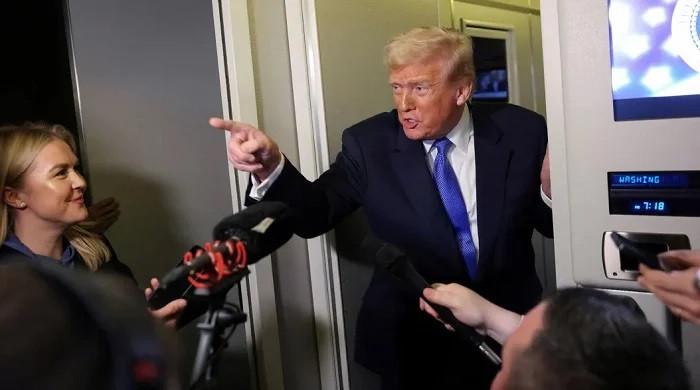
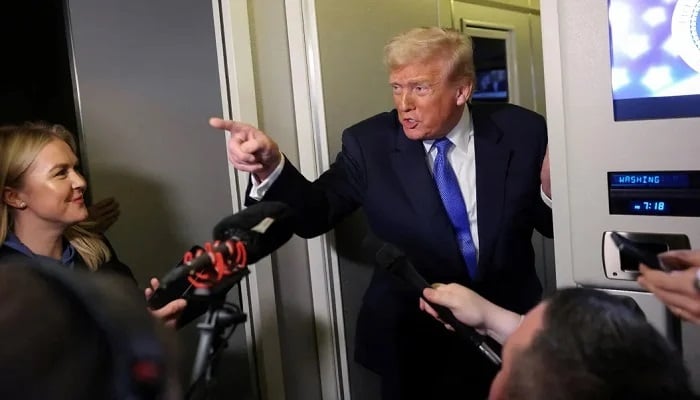
- Freeze applies to 19 countries already under US travel restrictions.
- Lakanwal, ex-CIA-backed fighter, charged with first-degree murder.
- Officials blame weak Joe Biden-era airlift vetting for shooter’s entry.
US President Donald Trump said Sunday his administration intends to maintain a pause on asylum decisions for “a long time” after an Afghan national allegedly shot two National Guard members near the White House, killing one of them.
When asked to specify how long it would last, Trump said he had “no time limit” in mind for the measure, which the Department of Homeland Security says is linked to a list of 19 countries already facing US travel restrictions.
“We don’t want those people,” Trump continued. “You know why we don’t want them? Because many have been no good, and they shouldn’t be in our country.”
The Trump administration issued the pause in the aftermath of the shooting in Washington on November 26, which left 20-year-old Sarah Beckstrom dead and another guard critically wounded.
A 29-year-old Afghan national, Rahmanullah Lakanwal, has been arrested and charged with first-degree murder in connection with the incident.
Lakanwal had been part of a CIA-backed “partner force” fighting the Taliban in Afghanistan, and entered the United States as part of a resettlement program following the American military withdrawal from Afghanistan in 2021.
Lakanwal had been granted asylum in April 2025, under the Trump administration, but officials have blamed what they called lax vetting by the government of Trump’s predecessor, Joe Biden, for his admission to US soil during the Afghan airlift.
Trump wrote after the shooting that he planned to “permanently pause migration from all Third World Countries to allow the US system to fully recover.”
Asked which nationalities would be affected, the Department of Homeland Security pointed AFP to a list of 19 countries — including Afghanistan, Cuba, Haiti, Iran and Myanmar — which since June have all faced travel restrictions to the United States.
Radicalised in US
Authorities believe the Lakanwal was not radicalised until after he came to the United States, Homeland Security Secretary Kristi Noem said on Sunday.
Speaking on NBC’s “Meet the Press” and ABC’s “This Week,” Noem said authorities think the alleged shooter was already living in Washington state when he became radicalised. Investigators are seeking more information from family members and others, Noem said.
Noem’s comments suggest Lakanwal, who was part of a CIA-backed unit in Afghanistan, may have embraced extremism after arriving in the United States.
“We believe he was radicalised since he’s been here in this country,” Noem told NBC News. “We do believe it was through connections in his home community and state, and we’re going to continue to talk to those who interacted with him, who were his family members.”
Noem said officials have received “some participation” so far from people who knew Lakanwal and warned the US would pursue anyone connected to the shooting.
“Anyone who has the information on this needs to know that we will be coming after you, and we will bring you to justice,” Noem said.
After Wednesday’s attack, the Trump administration took steps to clamp down on some legal immigration, including a freeze on the processing of all asylum applications.
Noem said on Sunday, immigration officials would consider deporting people with active asylum cases if it was warranted.
“We are going to go through every single person that has a pending asylum claim,” she said.
Politics
Rubio sees progress in Florida talks with Ukraine, but more work needed to reach deal
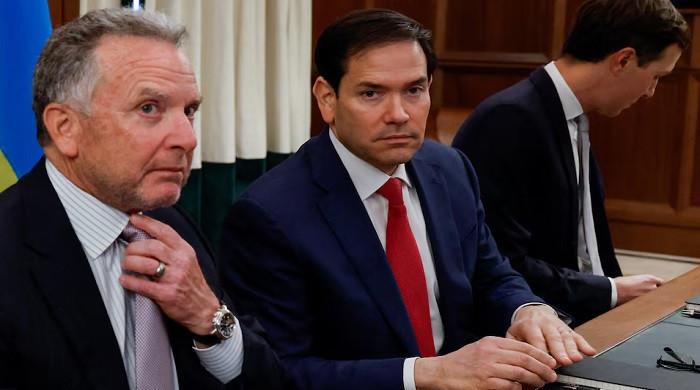

- Rubio says progress has been made on peace deal with Russia.
- Umerov leads Ukraine’s delegation after Yermak’s resignation.
- Kushner, Witkoff also present for Florida round of negotiations.
US and Ukrainian officials held what both sides called productive talks on Sunday about a peace deal with Russia, with Secretary of State Marco Rubio expressing optimism about progress despite challenges in ending the more than 3-year-long war.
“We continue to be realistic about how difficult this is, but optimistic, particularly given the fact that as we’ve made progress, I think there is a shared vision here that this is not just about ending the war … it is about securing Ukraine’s future, a future that we hope will be more prosperous than it’s ever been,” Rubio said in Florida, where the talks were being held.
Rubio said the aim is to create a pathway that leaves Ukraine sovereign and independent. The discussions follow roughly two weeks of negotiations that began with a US blueprint for peace. Critics said the plan initially favoured Russia, which started the Ukraine conflict with a 2022 invasion.
Special envoy Steve Witkoff and US President Donald Trump’s son-in-law, Jared Kushner, were also present representing the US side. Witkoff is expected to meet Russian counterparts later this week.
“There are a lot of moving parts, and obviously there’s another party involved here that will have to be a part of the equation, and that will continue later this week, when Mr Witkoff travels to Moscow,” Rubio said.
Trump has expressed frustration at not being able to end the war. He pledged as a presidential candidate to do so in one day and has said he was surprised it has been so hard, given what he calls a strong relationship with Russian President Vladimir Putin, who has largely resisted concessions to stop the fighting.
Trump’s team has pressured Ukraine to make significant concessions itself, including giving up territory to Russia.
The talks shifted on Sunday with a change in leadership from the Ukrainian side. A new chief negotiator, national security council secretary Rustem Umerov, led the talks for Kyiv after the resignation on Friday of previous team leader Andriy Yermak, chief of staff to Ukrainian President Volodymyr Zelenskiy, amid a corruption scandal at home.
As the meeting began, Umerov thanked the United States and its officials for their support. “US is hearing us, US is supporting us, US is walking beside us,” Umerov said in English.
After the meeting, he declared the talks productive. “We discussed all the important matters that are important for Ukraine, for the Ukrainian people, and the US was super supportive,” Umerov said.
The Sunday talks took place near Miami at a private club, Shell Bay, developed by Witkoff’s real estate business.
Zelenskiy had said he expected the results from previous meetings in Geneva would be “hammered out” on Sunday. In Geneva, Ukraine presented a counteroffer to proposals laid out by US Secretary of the Army Dan Driscoll to leaders in Kyiv some two weeks ago.
Ukraine’s leadership, facing a domestic political crisis fueled by a probe into major graft in the energy sector, is seeking to push back on Moscow-friendly terms as Russian forces grind forward along the front lines of the war.
Last week, Zelenskiy warned Ukrainians, who are weathering widespread blackouts from Russian air strikes on the energy system, that his country was at its most difficult moment yet, but pledged not to make a bad deal.
“As a weatherman would say, there’s the inherent difficulty in forecasting because the atmosphere is a chaotic system where small changes can lead to large outcomes,” Kyiv’s first deputy foreign minister, Sergiy Kyslytsya, also part of the delegation, wrote on X from Miami on Sunday.
Politics
Iran, Turkiye agree to build key trade rail link
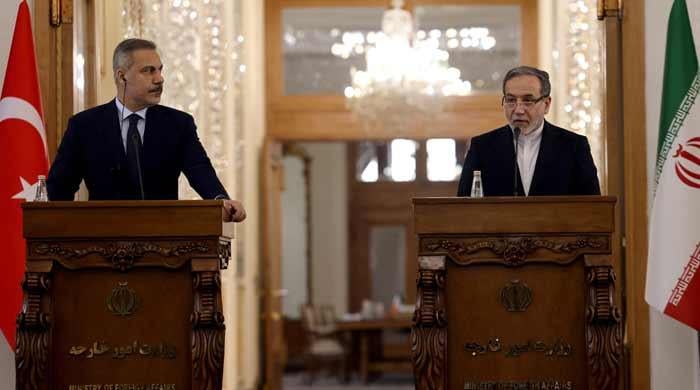
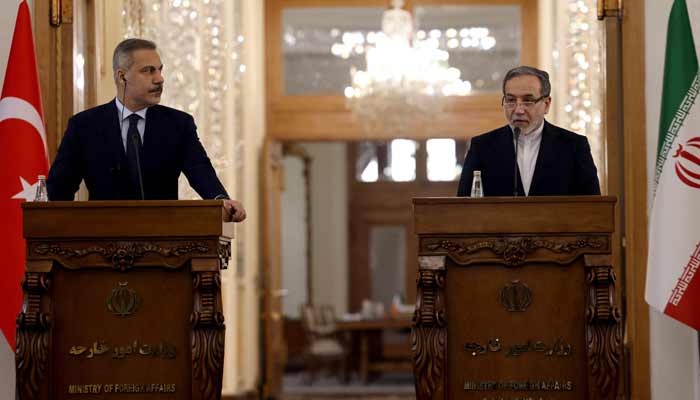
Iran and Turkiye have agreed to begin constructing a new joint rail link to serve as a strategic gateway between Asia and Europe, Iranian Foreign Minister Abbas Araghchi said on Sunday.
The planned route, known in Iran as the Marand-Cheshmeh Soraya railway transit line and running towards Turkiye’s Aralik border region, will cover around 200 kilometres (120 miles).
It will cost roughly $1.6 billion and is expected to take three to four years to complete, Iranian authorities have said.
Earlier this month, Iran’s transport minister Farzaneh Sadegh said the rail line would transform the southern section of what was once the Silk Road into an “all-rail corridor ensuring the continuity of the network between China and Europe”.
It would also ensure “fast and cheap transport of all types of cargo with minimal stops”, she added.
At a joint press conference on Saturday with his Turkish counterpart Hakan Fidan, Araghchi said “emphasis was placed on the need to remove barriers to trade and investment between the two countries”.
“The two countries also stressed the importance of the rail link […] in the region and expressed hope that the construction of this line can start as soon as possible,” he added.
The ancient Silk Road was a vast system of trade routes that for centuries linked East Asia to the Middle East and Europe, facilitating the flow of goods, culture and knowledge across continents.
In 2013, China announced the construction of the “Belt and Road Initiative”, officially known as the “New Silk Road”— a project that aims to build maritime, road, and rail infrastructure to boost global trade.
Iran has been seeking to expand infrastructure and trade with neighbouring countries as part of efforts to revitalise an economy strained by decades of international sanctions.
-

 Sports1 week ago
Sports1 week agoWATCH: Ronaldo scores spectacular bicycle kick
-

 Entertainment7 days ago
Entertainment7 days agoWelcome to Derry’ episode 5 delivers shocking twist
-

 Politics1 week ago
Politics1 week agoWashington and Kyiv Stress Any Peace Deal Must Fully Respect Ukraine’s Sovereignty
-

 Business1 week ago
Business1 week agoKey economic data and trends that will shape Rachel Reeves’ Budget
-

 Tech6 days ago
Tech6 days agoWake Up—the Best Black Friday Mattress Sales Are Here
-

 Fashion7 days ago
Fashion7 days agoCanada’s Lululemon unveils team Canada kit for Milano Cortina 2026
-

 Tech5 days ago
Tech5 days agoThe Alienware Aurora Gaming Desktop Punches Above Its Weight
-

 Politics1 week ago
Politics1 week ago53,000 Sikhs vote in Ottawa Khalistan Referendum amid Carney-Modi trade talks scrutiny






